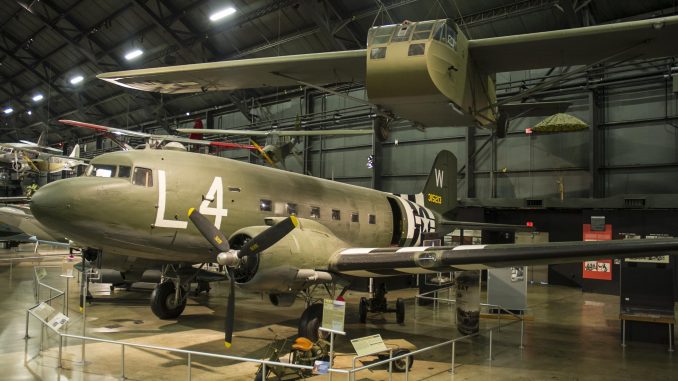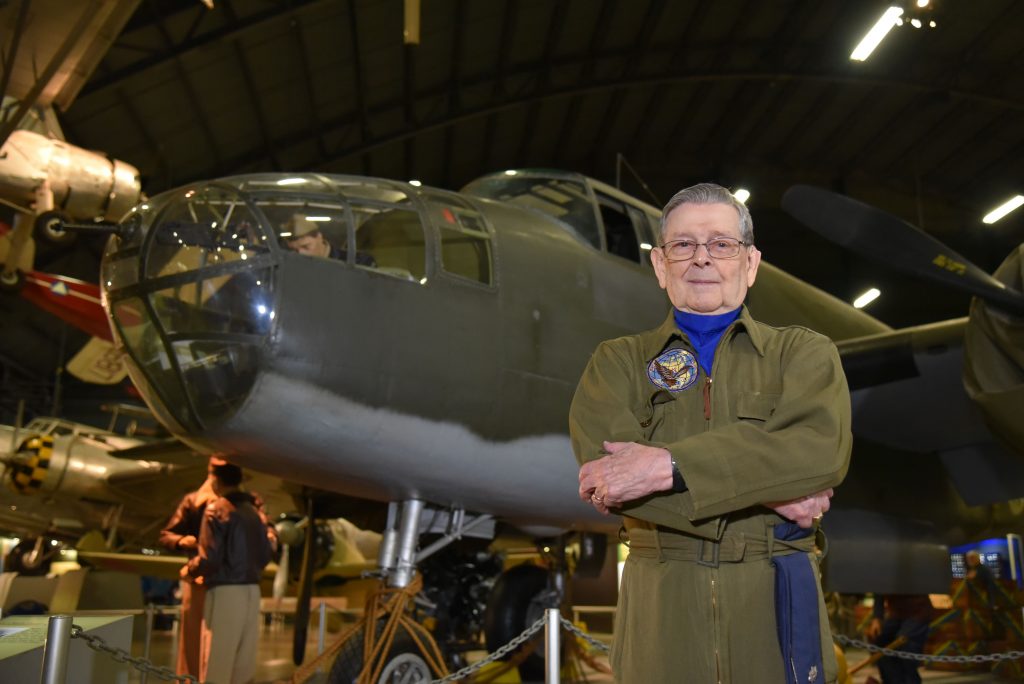
The National Museum of the U.S. Air Force will commemorate D-Day by offering visitors a special opportunity to interact with veterans who will be stationed at aircraft throughout the museum as part of the “Plane Talks” program on June 6 from 10:30 a.m. – 3:30 p.m. Among the veterans scheduled to be on-hand are retired Air Force pilots Lt. Col. Jack Hampshire and Maj. Jack Kunz, who have flown aircraft such as the B-25 and C-47; retired Army paratrooper, Maj. John Retterer, who will offer insight into the C-46; and Navy electrician mate, EM3 Kirk Baylor, who will discuss his experience with the P-61.
In addition, a civilian observer, Alexandra Moore, who lived in the coastal city of Portsmouth, England, (home of the Royal Navy) will discuss her first-hand experience of seeing the German Luftwaffe target her city in 1944, and former museum curator, Joe Ventolo, will speak about the B-24 exhibit. Visitors are encouraged to ask questions and interact with these aviation experts, who will tell personal stories and offer first-hand knowledge about the aircraft and exhibits.
“D-Day” is a traditional military term for the first day of an operation. Today, “D-Day” usually refers to June 6, 1944, the start of the largest sea-borne invasion in history. It began the Allied liberation of Nazi-occupied Western Europe, and marked the beginning of the end of the World War II for Germany. More than 150,000 American, British, and Canadian troops crossed the English Channel in ships and came ashore in smaller armored boats on the beaches of Normandy, a province of France, just after dawn on that day. The night before, thousands of paratroopers had jumped into France behind the beaches to aid the invasion.

Before, during, and after D-Day, Allied aircraft destroyed important Nazi resources, helping to make the invasion possible. The German defenders put up a fierce fight, but the Allied troops gained ground and poured equipment and soldiers into France. Over the next 11 months, the Allies on the ground and in the air freed France and other European nations from Nazi rule. At the same time, Russians pushed toward Berlin from the east. In early May 1945, the Allies, which included the Russians in the east and Americans. British, Canadians and others in the west, defeated Germany and the war in Europe was over.
The National Museum of the U.S. Air Force, located at Wright-Patterson Air Force Base near Dayton, Ohio, is the world’s largest military aviation museum. With free admission and parking, the museum features more than 360 aerospace vehicles and missiles and thousands of artifacts amid more than 19 acres of indoor exhibit space. Each year about one million visitors from around the world come to the museum. For more information, visit www.nationalmuseum.af.mil.

Be the first to comment
Graphic Design, Branding and Aviation Art